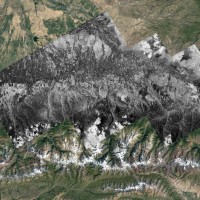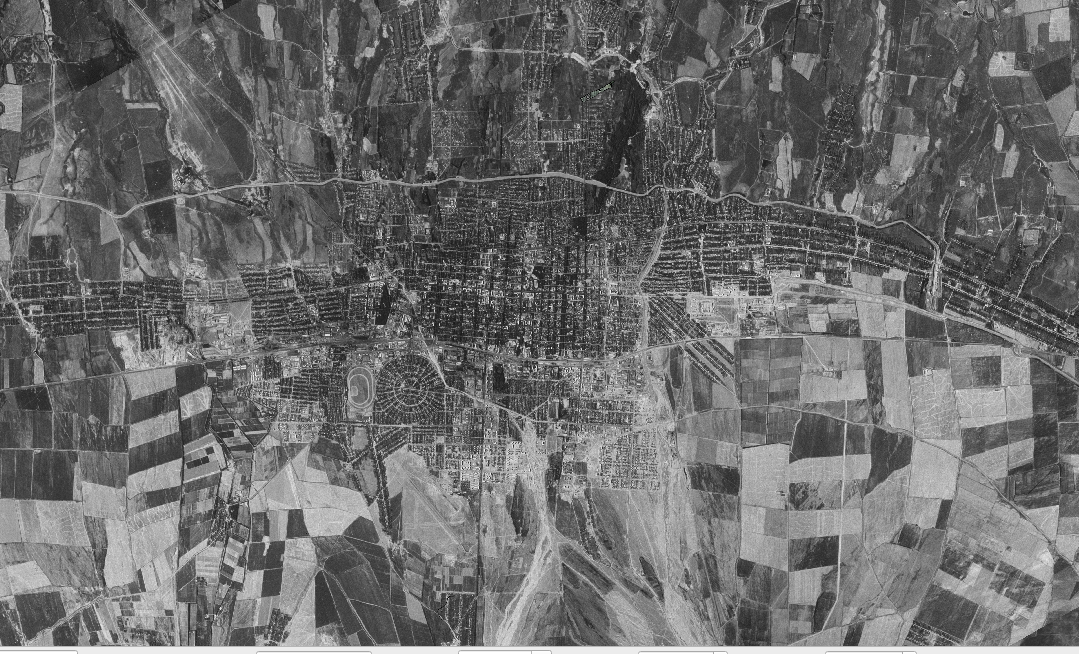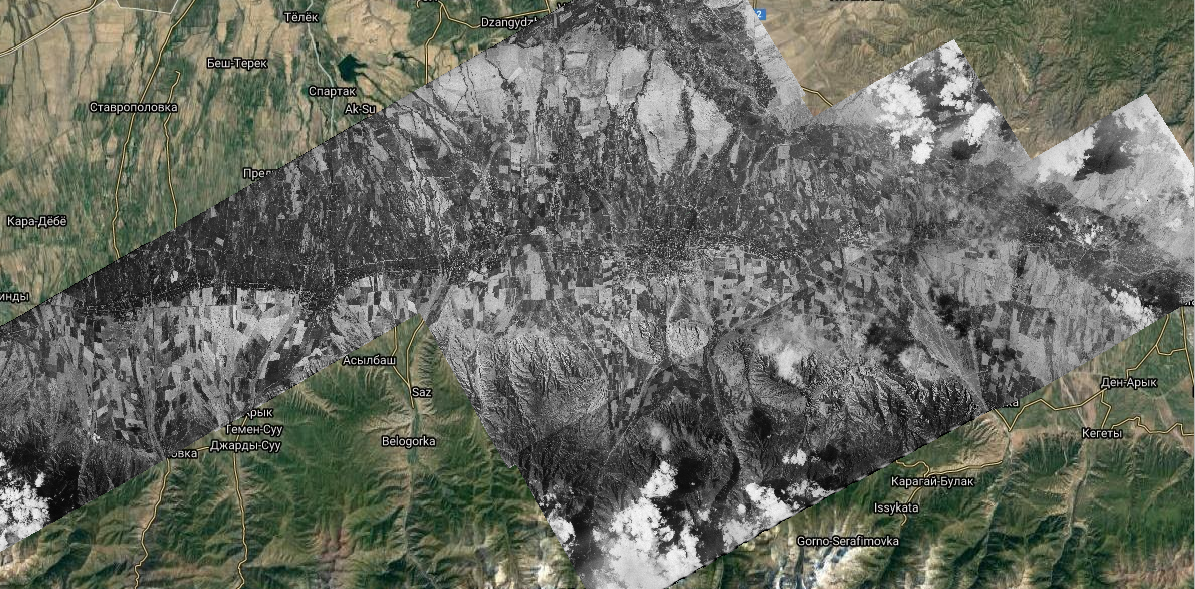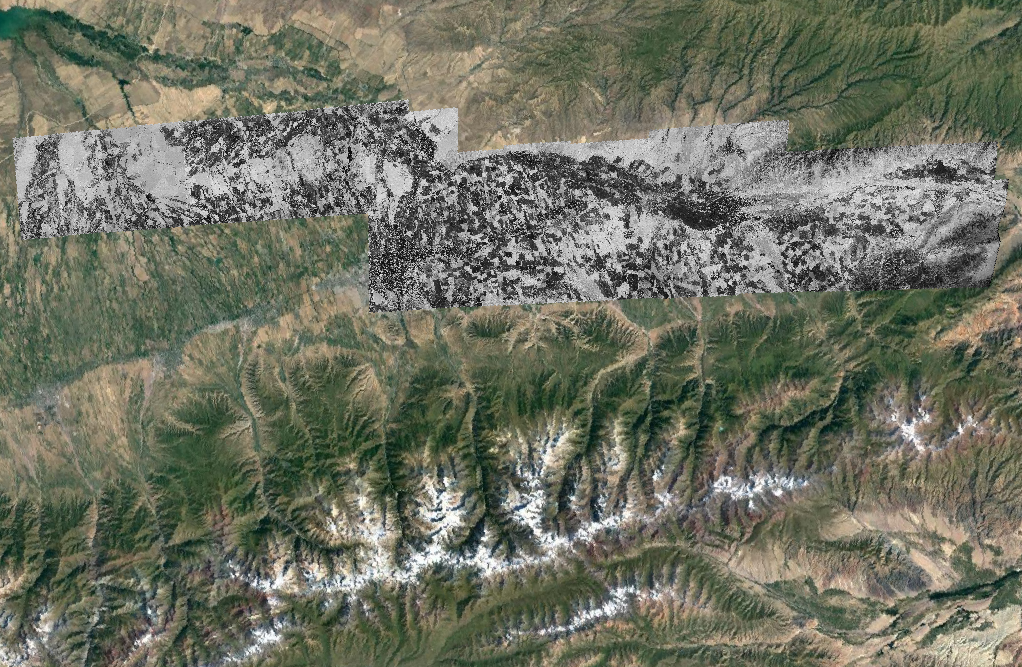PREF 2020 - 2021
|
Climate Change in Kyrgyzstan: Short Movie Series Project Adina Sulumbekova, Kamila Kurbonmamadova General overview: The Climat Change in Kyrgyzstan: Short Movie Series Project aimed to film and produce short movie series reflecting environmental and climate issues. Being aware that creativeness has always been privileged in addressing social and ecological questions, the principal project investigators found visualization of climate problems significant in demonstrating their active position. Budget of the project: $1600,00 USD Action plan: It was planned to start film production in April 2021 after script preparation and the selection of the place. The first short movie was filmed in Balykchy, Issyk Kul region. Primary outcomes:
Link to this block: https://auca.kg/en/research_pref_2020_2021/#b864 |
|
Forward - to the Past: Satellite Images of Chui Region from the 1960s to the Present Day Talgat Dzhumashev, Graduate student, MAANTH General overview: The research project Forward - to the Past: Satellite Images of Chui Region from the 1960s to the Present Day proposed to select the highest quality images of the Chui valley with an interval of 8-10 years from 1962 to the early 1980s. The resulting images are meant to be processed through orthorectification, color correction, and geo-reference using specialized software to compare them with modern maps. A catalog of interactive images will allow tracing the dynamics of changes in the valley's surface over the past 60 years and get published on the AUCA academic web resources to provide students and interested scholars access to conduct their own research works. Budget of the project: $1500,00 USD Action plan: It was planned to find matching series of images for each selected year and order digitizing images while studying literature. 5 months (March-July) were spent on the project work. Acquisition of scanned images was accomplished in May when June and Jule were mainly spent for image processing divided into groups of the 1960s, 1970s, and 1980s at the beginning of the project. Primary outcomes: 1. Four time periods were studied with an interval of 5 years between 1962,1967,1972, and 1977 2. In total 81 files, 46 GB of georeferences images and files were produced while covering 1,800,00 hectares of the Chui valley 3. Satellite images of the Chui region in 1962, 1967, 1972, and 1977 were geo-referenced. Now the processed files have embedded information about the coordinates of each point. They can now be superimposed on current maps with the used coordinate system WGS 84 / Pseudo-Mercator EPSG: 3857 (for example, OpenStreetMaps, Google maps, etc.)
Link to this block: https://auca.kg/en/research_pref_2020_2021/#b863 |
|
Mapping of Issyk-Kul Rock Art: Prevention and Preservation Aida Abdykanova, Montana Reid General overview: The Mapping of Issyk-Kul Rock Art: Prevention and Preservation is devoted to determining the number and compact locations of cultural heritage sites on the north-western coast of Issyk-Kul and making a detailed map of the cultural heritage objects to protect the cultural heritage. Our previous experience and used methods significantly contributed to the study of this area. In this project, interdisciplinary approaches were used to process aerial and satellite data with advanced survey techniques to reveal, map, and justify cultural heritage objects to protect, document, and preserve them. Budget of the project: $ 2300,00 USD Action plan: The main goal of our research was to create a map of cultural heritage in the surveyed area. All objects revealed as a result of project implementation have to be documented in the future because the open-air cultural landscape is vulnerable to weathering and vandalism. The area of the research (from Balykchi to Cholpon-Ata) is huge and covers more than hundreds of thousands of hectares. In this project, we have focused on areas of the Chet-Koi-Suu River delta and the vicinity of the village of Chok-Tal. The main methods used in the project consist of archaeological pedestrian surveys along planned routes to cover gaps in previous studies and making everyday maps of survey findings to see the progress. The pedestrian survey was conducted by three groups with two people in each of them. Groups were independent and had their area of survey. Discovered cultural heritage objects in the form of rock art motifs, burial places, ritual places, and architectural patterns such as stone fences, walls, lines, etc. were fixed with help of OsmAnd offline mobile maps and navigation applications available to use on smartphones. The accuracy of the application is up to 20 meters because it is based on a phone GPS navigator. But in the field, it was shown as 3-5 meters which is fine for archaeology mapping. From the OsmAnd application, all data as points and tracks were exported as GPS. format files. These format files can be easily opened in Google Maps and Google Earth services and allow users to see all names, descriptions, and coordinates of each fixed object and pedestrian route. This possibility of the OsmAnd application allows us to make mapping easier and faster. We were able to cover more territories and save time on pedestrian surveys because each of us can fix discovered objects. The survey itself was planned from south to north direction because according to our observations most of the rock art motifs were oriented in the southern direction and can be well spotted and seen by surveyors. Objects were fixed according to abbreviations and a minimum set of descriptions. Abbreviations for objects were suggested as follows: RA – rock art object (min. set of description - a type of motifs, number of motifs, preliminary date, and other specifics), K – kurgan, burial mound (min. set of description – diameter/size and height), TK – tash-koroo (stone fencings), W – stone walls/lines/terraces (specifics such as height, one-line stones, etc.). Primary outcomes: 1. Major outcomes of the project contributed to the protection and documentation of cultural heritage in the country. 2. A report will be generated to the Ministry of Culture of the Kyrgyz Republic and the National Academy of Sciences to share new knowledge to use further for practical procedures aiming at the protection and preservation of archaeological sites. 3. The mapping of sites will also benefit local museums and promote the development of cultural tourism in the region.
Participants of the fieldwork: Aida Abdykanova (Associate Professor), Montana Reid (ANTH student), Baitur Toktosunov (MAANTH Student), Jamilia Toktosunova (ANTH student), Jumagul Beketaeva (MAANTH student), and Talgat Dzhumashev (MAANTH student). Read the full report HERE Link to this block: https://auca.kg/en/research_pref_2020_2021/#b865 |
|
Problems, Progress and Prospects of Organic Farming as a Means of Sustainable Agriculture in Kyrgyzstan. Mairambek Nurgaziev, Associate Professor General overview: Since the organic farming system has been encouraged to reduce environmental impacts, many studies have been conducted. Kyrgyzstan is located in Central Asia, and its main industry relies on agriculture, with a huge area of farmlands. To reduce the environmental impacts in Kyrgyzstan, the current farmland use should be converted to an organic farming system. In addition, to conserve endangered species inhabit in Kyrgyzstan, the soil condition should be considered. However, despite the necessity of an organic farming system, the organic products in Kyrgyzstan lack international standards, such as International Organization for Standardization (ISO) certificate. In this research, the factor which made the absence of international standards was assumed to be the lack of proper process to get the standard. Budget of the project: $3000,00 USD Action plan: As the organic farming system was not seriously considered and focused on in the other research works, the first factor to be checked was the difference in the current soil condition in Kyrgyzstan. To measure the difference, soil analysis was conducted with soil samples gathered from 14 farmlands. The next factor to be checked was how consumers and producers in Kyrgyzstan discern what is the organic farming system, to measure the socio-economic value. For that, a questionnaire was provided, and as many answers as possible were gathered for the facility of analysis. From the soil analysis, the difference between organic and non-organic farming was not observed and concluded that Kyrgyz farms are already taking an organic farming system, whether the farm has organic standards or not. From the questionnaire analysis, even though the fixed hypotheses were dismissed, the preference for organic products and the same opinion that an organic farming system in Kyrgyzstan is not actively considered, and cause the lack of proper process for an international standard. Primary outcomes: 1. The result defined in this research can be applied to future work about the necessity of organic products in Kyrgyzstan and has the significance that this research considered the overall condition of organic farming in Kyrgyzstan. 2. This research premised that Kyrgyzstan’s farming system is not different from other countries where conventional farming systems dominate the agricultural industry because of environmental contamination, the result is not significant, since Kyrgyzstan has already accommodated the organic farming system Read the full report/article HERE Link to this block: https://auca.kg/en/research_pref_2020_2021/#b862 |
|
Tengrian Beliefs and Practices in Post-Soviet Kyrgyzstan Baitur Toktosunov, Mukaram Toktogulova (Advisor for the project) General overview: The Tengrian Beliefs and Practices in Post-Soviet Kyrgyzstan project aimed to conduct a research analysis with 12 shamans (six in the North of Kyrgyzstan, and six in the Southern regions of the country). The project discussed primary questions on "How do shamans perceive their role in their community?", including the investigation of shamans' life trajectories. Also, the project investigator aimed to study whether shamans challenge national identity and discourse by offering alternatives. It has also been aimed to Investigate how shamans relate to the state religion policy and study potential links between shamans’ practices and Islam. Budget of the project: $3000,00 USD Action plan: An oral history methodology is used to collect data. Interviews with twelve shamans were held - six in the north of Kyrgyzstan and six in the south. By choosing these two regions we will be able to compare shamans’ practices and audiences. The oral history methodology provided researchers with the opportunity to give a voice to shamans themselves. It has also investigated the response to the shamans’ practice by the local community. Primary outcomes: 1. Ethnographic fieldwork for the research was accomplished from January 12 to 18, 2021 in Naryn, Issyk-Kul, and Bishkek. 2. Ethnographic documentaries and scholarly papers were produced. 3. Fieldwork was conducted in Min-Bulak village of Naryn region, where four respondents were interviewed and filmed - Jumabubu Toigonbai kyzy, Sharkul Jumakalova, Burul Sherbotoeva, and Jazgul Isabaeva. 4. Sainap Abdyrakhmanova was interviewed and filmed in Naryn, while Kaliman, Murat, and Jypar (one family) were interviewed and filmed in Kichi-Jargylchak village, Jeti-Oguz, Issyk-Kul region. 5. And religious practices of Talantaly Bakchiev, a manaschi, were filmed in Ak-Suu, Issyk-Kul region. 6. Bakyt Isakov and Tynarkul Ryskulova were interviewed and filmed in Bishkek for the ethnographic documentaries.
Watch the ethnographic documentary HERE Link to this block: https://auca.kg/en/research_pref_2020_2021/#b861 |








